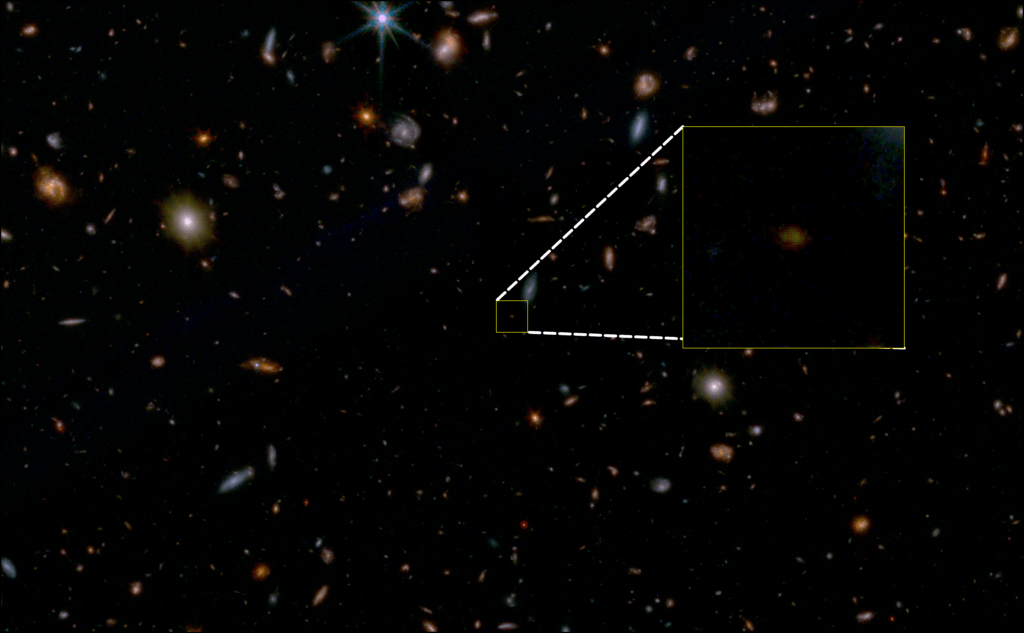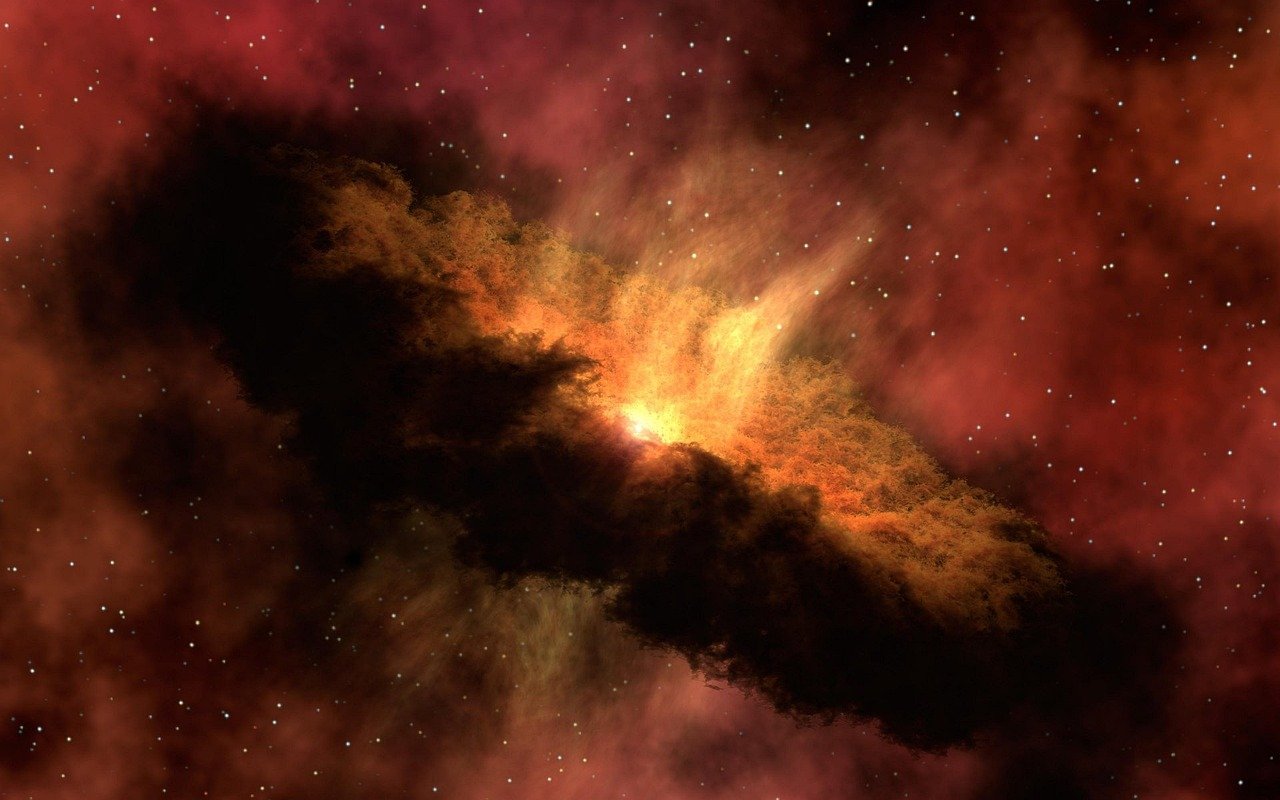Astronomers using the James Webb Space Telescope (JWST) have made a groundbreaking discovery: a galaxy that ceased forming new stars over 13 billion years ago, making it the oldest ‘dead’ galaxy ever observed.
The galaxy, which existed a mere 700 million years after the Big Bang, is odd by galactic standards. Now, based on recent findings, it’s also challenging our understanding of early galaxy evolution.
In research led by Tobias J. Looser and an international team of astronomers, the James Webb Space Telescope (JWST) has discovered an ancient quiescent galaxy. At a redshift of z=7.3, it is the oldest galaxy of its kind ever seen.
Published in Nature, the study provides interesting insights into the early universe, challenging existing models of galaxy evolution and offering a unique opportunity to study the mechanisms behind galaxy quenching. Moreover, it challenges the notion that the earliest galaxies in the universe were long living monsters fueled by the remnants of the Big Bang, and spawned stars for eons. Turns out, this might not be true after all.
The galaxy, designated JADES-GS-z7-01-QU, was initially identified as a Lyman break galaxy. In simple terms, astronomers exploit the fact that the intense ultraviolet radiation from young, hot stars in distant galaxies is absorbed by the neutral hydrogen in the intergalactic void of space, creating a “break” in the galaxy’s spectrum. As the radiation ‘dissipates’ over the long distance, this characteristic drop allows astronomers to estimate the galaxy’s redshift, or its distance from Earth, which in turn indicates age. This particular galaxy is over 13 billion years old.
To put it into perspective, the universe is 13.7 billion years old.
Using the JWST’s Near-Infrared Spectrograph (NIRSpec) prism, the astronomers were able to confirm that the galaxy was quiescent, which is a fancy way of saying “dead.” Basically, star formation as ceased. What has given the team pause, however, is how young the galaxy was when it “died.”


(Image: JADES Collaboration)
“The first few hundred million years of the universe was a very active phase, with lots of gas clouds collapsing to form new stars,” said Tobias Looser, the paper’s first author. “Galaxies need a rich supply of gas to form new stars, and the early universe was like an all-you-can-eat buffet.”
This galaxy experienced an intense period of star formation over a period between 30 and 90 million years, and then, over a period of about 10 million years, the star formation just stopped. While 10 million years does seem like a long time to die, it is but a mere moment in the cosmic timeline. For astronomers, this is not indicative of modern galaxy formation and life which lasts significantly longer.
The JWST and the researchers were able to get pretty solid estimates of the galaxy’s physical properties such as size and mass. Based upon dust attenuation and star formation, the team was able to confirm that this small cloud-like galaxy lived fast and died hard.
“We’re not sure if any of those scenarios can explain what we’ve now seen with Webb,” said co-author Professor Roberto Maiolino. “Until now, to understand the early universe, we’ve used models based on the modern universe. But now that we can see so much further back in time, and observe that the star formation was quenched so rapidly in this galaxy, models based on the modern universe may need to be revisited.”
The existence of such a galaxy at this early stage in the universe’s history suggests that our models of galaxy evolution, based on the modern universe, may need to be revised. The team says that further research can now be done to understand why this galaxy did not last as long as more modern galaxies.
To boil this down, when the universe was young, energy and matter would have been more condensed, creating a surplus of star-creating material for any galaxy. As the universe expanded, all that energy and matter spread out, which theoretically, would make star formation more difficult. However, newer galaxies have significantly longer life spans than this ancient ‘dead’ example.
One theory the astronomers present is that the early universe, with its churning mess of matter and energy, saw the creation and death of stars occur more quickly, resulting in more supernovae and black holes. With such high energy output, it is possible that as the universe continued to expand, star formation halted in some galaxies closer to the source of the Big Bang.
Another theory is that perhaps this galaxy died, but has since come back to life.
“We’re looking for other galaxies like this one in the early universe, which will help us place some constraints on how and why galaxies stop forming new stars,” said D’Eugenio. “It could be the case that galaxies in the early universe ‘die’ and then burst back to life – we’ll need more observations to help us figure that out.”
MJ Banias is a journalist who covers security and technology. He is the host of The Debrief Weekly Report. You can email MJ at mj@thedebrief.org or follow him on Twitter @mjbanias.

